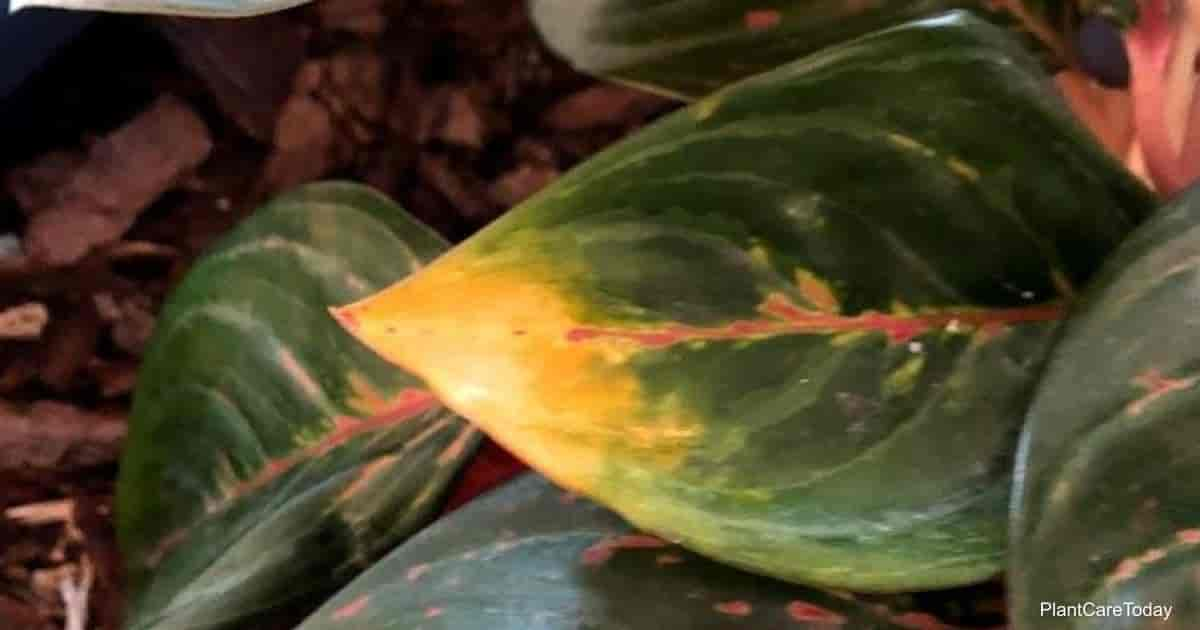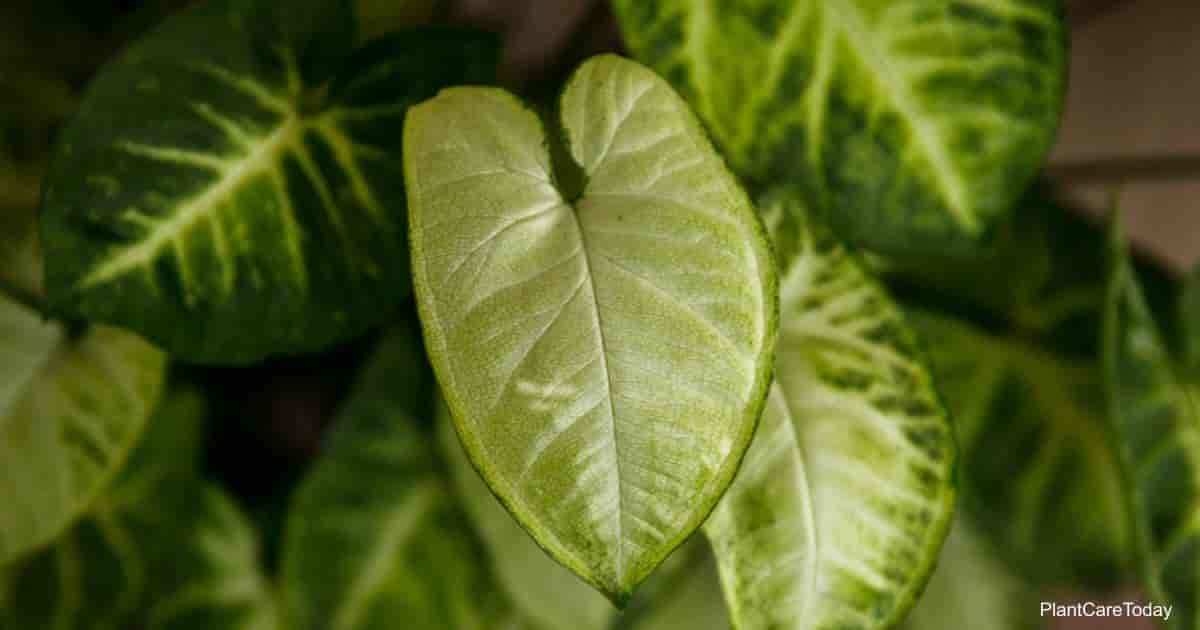The Marantaceae family is often referred to as the prayer plant family for the many plants which famously fold their leaves in a prayer-like pose at night.
Of these, the many types of calathea varieties have always been among the most stunning.
Calathea veitchiana (ka-LAY-thee-uh veet-chee-AY-na) was one of these famous plants until recently when it was among a large percentage of calatheas to be reclassified under the genus Goeppertia.
Of course, botanical names tend to change often, and gardeners are loathe to adopt these new names, so this plant will likely remain a calathea in the public eye for years to come.
Hailing from Ecuador, it’s not too surprising why botanists wanted to rename this perennial Calathea plant.
Instead of the folding leaves, calatheas are famous for; this plant instead has large round leaves, which have given it the common name of medallion calathea.
It’s also sometimes referred to as calathea medallion and medallion prayer plant, even though it’s not a true prayer plant.
Related: Another Calathea plants
Calathea Medallion Care
Size & Growth
Medallion prayer plants usually grow to about 2’ feet tall, although they’re known to reach 3’ feet in the right conditions.
Instead, this slow grower will take on a bushy appearance over time, with plenty of the large, round leaves that give the plant its nickname.
These leaves have a bright green pattern on top and a deep burgundy underside.
While the main species doesn’t fold its leaves as with true prayer plants, some cultivars have this ability.
Flowering and Fragrance
It’s almost impossible to get this plant to bloom, sadly.
Growing outdoors has a higher chance of success, but it’s almost unheard of for one to produce flowers indoors.
Light & Temperature
As with most large-leaf plants, your medallion is adapted for life on the forest floor, shaded by a canopy of trees and larger plants.
As a result, the leaves can easily scorch when left exposed to direct sunlight.
Instead, aim for bright indirect light or dappled sun.
Another aspect of this plant’s native habitat is that it’s used to high humidity.
While it can handle moderate humidity, it should never be exposed to levels below 50% percent.
Kitchens and bathrooms tend to be the most humid rooms in the house and are well-suited for this plant.
However, you can also choose to use a pebble tray or humidifier to ensure the plant is getting enough moisture.
While medallion calatheas can grow outside in USDA hardiness zones 9 to 12 ( and parts of zone 8), it’s far more common to see them growing indoors.
Thankfully, average household temperatures are perfect for this plant, which has a comfort range of 65 to 85° degrees Fahrenheit.
Sudden temperature changes and cold drafts can wreak havoc with your medallion. Be sure to keep it away from vents, air conditioners, or any other source of drafts.
This includes heaters, as the dry heat emanating from them can damage your plant.
Watering and Feeding
Medallion calathea is intolerant of soggy or overly dry soil, so the soak-and-dry method of watering is essential.
Test the soil with your finger and give the plant a thorough watering once it’s dry 1” inch down.
Never use tap water, as the plant is highly sensitive to chemicals, especially chlorine and fluoride. Water using distilled water or rainwater. More on watering Calathea plants here.
The water should also be at room temperature to avoid shocking your plant.
While this species may be watered from below, you should occasionally water from above to help flush out any toxin buildup.
Just make sure you don’t get the leaves wet when watering from above.
Use a balanced 15-15-15 liquid houseplant fertilizer that’s fortified with iron.
It’s often best to dilute the fertilizer by at least half to reduce the risk of chemical burns and use it half as often as the packaging recommends if it suggests frequent applications.
The plant will need to be fed monthly during the spring and summer but should not be fed the rest of the year.
Soil & Transplanting
Just about any good-quality, well-draining tropical potting soil will work for your calathea medallion. Watch out for fungus gnats in any soil with wood products.
Alternatively, you may wish to amend a standard potting mix with peat moss and perlite.
Medallion prayer plants only need repotting once every two years or so in the spring.
Graduate to one pot size larger as needed and replace the soil.
You may need to repot a little sooner if you see signs that the plant is root-bound (such as roots sneaking out of the drainage holes), although this will be rare if you’re dividing the plant when repotting.
Grooming And Maintenance
Dust is the biggest part of maintaining this plant, and you’ll want to wipe it off with a damp cloth once or twice per week.
However, its sensitivity towards chemicals means you’ll want to avoid any form of leaf shine.
You may choose to use a tiny bit of Dawn dish soap in lukewarm water when wiping down the leaves, but be sure to test it on one leaf first to ensure the plant won’t have a reaction.
Pruning is simply a matter of removing a dead or diseased leaf now and then.
How To Propagate Goeppertia Veitchiana
This plant is most commonly propagated through division, as it’s very difficult to make it flower.
However, there have been some reports of success using cuttings and seeds with enough patience and skill.
Medallion Prayer Plant Pests or Diseases
Medallion plants are susceptible to all of the common suspects, such as:
- Aphids
- Mealybugs
- Scale
- Spider mites
- Thrips
Leaf spot and root rot are the two most common diseases the plant faces.
However, its sensitivity to fluoride toxicity can leave your plant ill if you expose it to tap water.
The good news is that this amazing plant is completely non-toxic to both humans and pets.
The bad news is that it’s related to arrowroot and, as such, tends to be quite tasty for your pets and children.
Thus, for the plant’s own safety, you should keep it out of reach from tiny hands and paws.
Calathea veitchiana Uses
As with all calatheas, the leaves of the medallion plant have been used in traditional basket weaving.
It makes for a truly wonderful accent in any room and is perfect for the bathroom.
While not often planted outdoors, its large leaves and relatively short height make it a great choice for borders or to fill in spaces under taller plants.
Credit : Gary Antosh (https://plantcaretoday.com/calathea-veitchiana.html)





